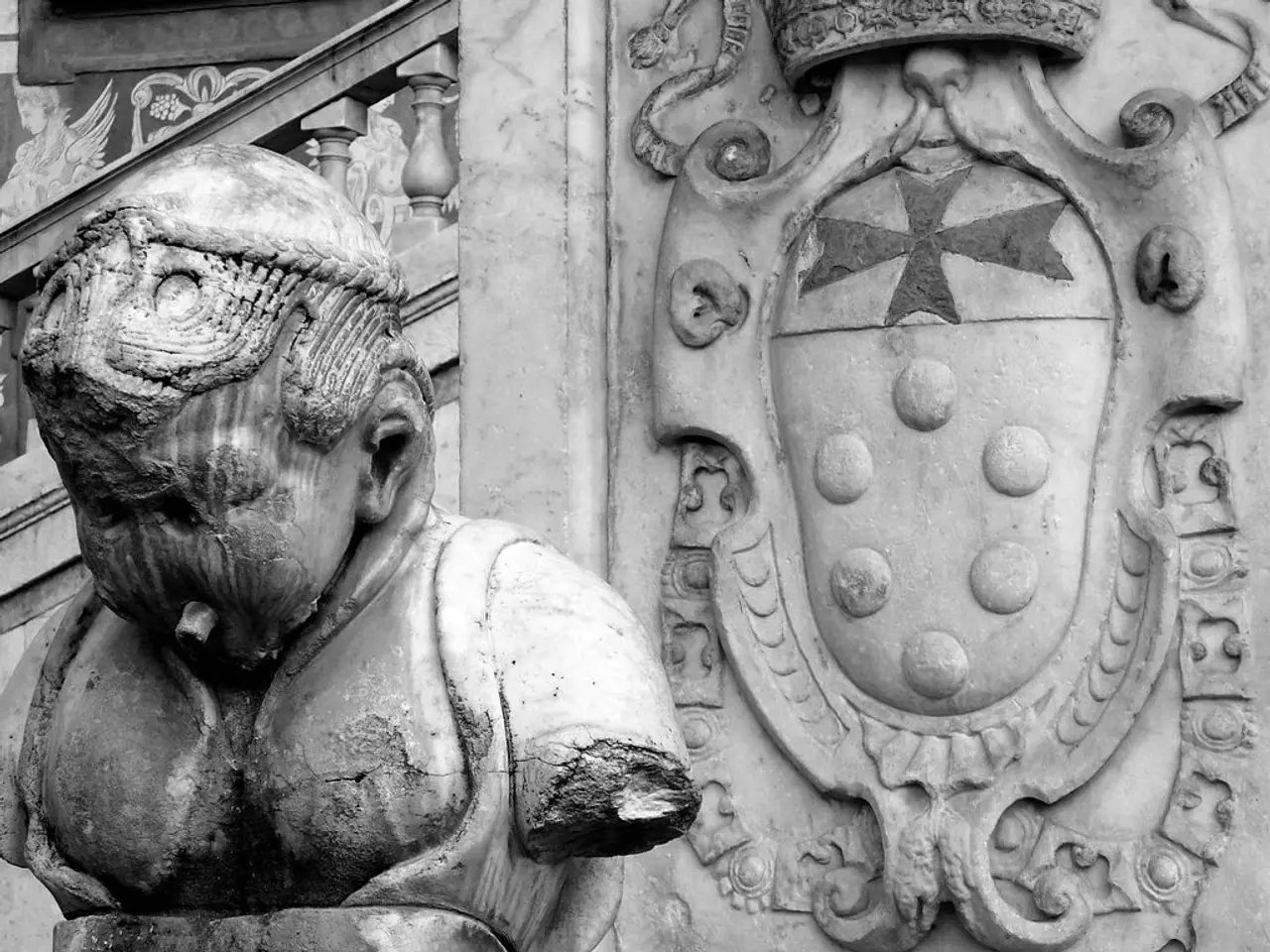Artistic treasures of San Ildefonso Pueblo span over 120 years, showcasing historical and contemporary pueblo art.
Unveiling the Evolution of San Ildefonso Pueblo Art
San Ildefonso Pueblo, a vibrant community in Santa Fe County, is renowned for its unique and captivating art. An exhibition at Adobe Gallery, titled "San Ildefonso Pueblo National Treasures, 1850s-1970s," showcases this rich artistic history that spans over 120 years.
The exhibition delves into the transformation of San Ildefonso Pueblo art, a process that has been described as a slow, evolving, moving thing, almost resembling a living organism. This evolution is most notably marked by the revitalization and innovation of black-on-black pottery in the early 20th century.
Maria Martinez and her husband Julian Martinez were the chief architects of this transformation. They pioneered the black-on-black pottery style, a technique that involves creating a matte design on a polished black surface using traditional hand-coiling and firing methods. This style, distinctive and iconic of San Ildefonso Pueblo and Pueblo pottery in general, gained international recognition as both an artistic and cultural emblem. Julian's gloss-matte firing technique further enhanced the artistic appeal, producing contrasting finishes on the same pot.
While pottery is central, San Ildefonso Pueblo artists have also made significant strides in painting and other media. Pueblo artists have a long history of painting, with ancestral Pueblo artists known to paint with tempera on woven cotton fabric over 800 years ago. However, contemporary Pueblo painting as an easel art form expanded notably in the 20th century, especially as Native artists adopted materials like watercolor and ink and exhibited their works more broadly. San Ildefonso artists contributed to this by integrating Pueblo themes and styles into modern art scenes, helping to define Native American contemporary art.
From the 1850s through the early 1900s, Pueblo pottery was craft-based, functional, and stylistically varied across different villages. The innovation by the Martinez couple marked a transition to an art form highly valued in both Native and non-Native contexts. Since then, San Ildefonso Pueblo art has continued evolving, with contemporary artists exploring traditional and new forms, media, and themes, maintaining cultural continuity and artistry that respects Pueblo heritage.
The exhibition at Adobe Gallery includes work by over 25 San Ildefonso artists, including several important intergenerational lineages. It is a valuable resource for visitors to learn about the history and evolution of Pueblo art, providing insights into the development of this unique art form.
Moreover, the growing market for contemporary Indigenous art is attracting new collectors, some of whom are starting to look back to the historic and modern material. Adobe Gallery's goal is to find the next generation of collectors for contemporary Indigenous art, and the exhibition serves as a testament to the enduring appeal and significance of San Ildefonso Pueblo art.
The SWAIA Santa Fe Indian Market, a contemporary Indigenous art event that takes place every August, is another platform where the art of San Ildefonso Pueblo is showcased. The black-on-black style of pottery from San Ildefonso Pueblo has become synonymous with the Southwest, and its influence can be seen in various forms, such as Art Deco borrowing elements from this distinctive style.
Generations later, Tony Da, the grandson of Maria Martinez, integrated new techniques such as sgraffito carving and inlay work into Pueblo art, further expanding the artistic possibilities of this unique art form.
In conclusion, the San Ildefonso Pueblo National Treasures exhibition at Adobe Gallery offers a fascinating glimpse into the evolution of Pueblo art from the mid-19th century onward. It highlights the crucial early 20th-century revival and innovation of black-on-black pottery by Maria and Julian Martinez, complemented by the growth of Pueblo painting traditions that continue into the contemporary era with broad Native artistic contributions. The exhibition serves as a testament to the enduring legacy of San Ildefonso Pueblo art and its significant role in the history and evolution of American art.
[1] Martinez, M., & Martinez, J. (1990). Maria and Julian: Pueblo Pottery of San Ildefonso. University of New Mexico Press.
[2] Lomahaftewa, S. (1999). Pueblo Pottery: Ancient and Contemporary. Smithsonian Institution Press.
[3] Ortiz, T.J. (1969). The Pottery of San Ildefonso Pueblo. University of New Mexico Press.
[4] Adobe Gallery. (n.d.). San Ildefonso Pueblo National Treasures, 1850s-1970s. Retrieved from www.adobegallery.com/exhibitions/san-ildefonso-pueblo-national-treasures-1850s-1970s
[5] Santa Fe Indian Market. (n.d.). Retrieved from www.swaia.org/indianmarket
News of the comprehensive and historical exhibition, "San Ildefonso Pueblo National Treasures, 1850s-1970s," at Adobe Gallery, underscores the evolution of arts in San Ildefonso Pueblo, featuring not only pottery but also paintings and other media. This event delves into the significant influence of the revitalization and innovation of black-on-black pottery in the early 20th century, led by Maria and Julian Martinez, and the growth of Pueblo painting traditions. The exhibition also provides insights into the expansion of contemporary Indigenous art, including works from various artists within the pueblo and its impact on modern art scenes, in lifestyle magazines and home-and-garden publications, reflecting the enduring appeal and significance of San Ildefonso Pueblo art.




